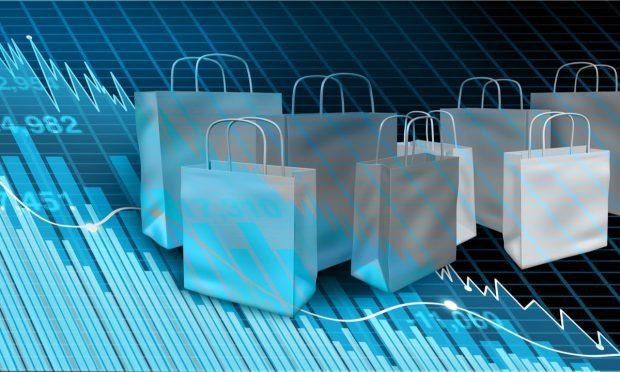Retail Sales Turn Negative, Reflect Broad-Based Consumer Caution

U.S. retail sales unexpectedly fell 0.3% in May from a downwardly revised 0.7% pace in April, extending a four-month slowdown and delivering the strongest proof yet that record high fuel and food prices are cutting into consumer spending and confidence.
According to the Census Bureau’s May report, if a 4% increase in sales at gas stations last month is backed out, retail sales declined 0.7%.
At the same time, economists noted the latest 8.1% annual increase in retail activity, which is not adjusted for inflation, was below last week’s 8.6% headline CPI number, a gap that further illustrates the impact that rising prices are having on consumer spending, which accounts for 75% of the U.S. economy.
“While it’s only one month, this is a sign that higher prices are starting to thwart consumer demand,” economist Katherine Judge of CIBC Economics told MarketWatch after the report was released.
Stagflation
After posting a 2.7% gain in January in the wake of a dismal December that fell 1.6%, the pace of monthly retail sales gains has slowed each month all year, with May’s result marking the third time in the past year that the key economic barometer has turned negative.
While categories such as food and beverage stores rose 1.2% and restaurants and bars gained 0.7%, most of the remaining dozen retail segments tracked in the survey that are not related to food and fuel all stalled last month, with moves that were either up or down by a fraction of a percent.
For example, so-called non-store sales from online retailers fell 1.0% in May, while department stores edged up by 0.9%. Other major retail groups also stagnated last month, with clothing and accessories up 0.1%, health and personal Care dipping 0.2%, with sporting goods, hobby, musical instrument and book stores up 0.4%.
At the same time, sellers of so-called “big ticket items” that are often financed rather than paid for in cash, were also down a bit more than the average, with furniture and home furnishing declining 0.9% and electronics and appliance stores dropping 1.3% from where they were in April.
Auto dealers, which have the largest exposure to rising interest rates of any retail category, saw sales fall 4% in May versus April, and are now down nearly 5% from a year ago.
“A significant stockpile of household savings has helped consumers manage mounting inflation pressures to this point,” Wells Fargo Senior Economist Sam Bullard told Reuters.
To be sure, retail sales are not the only indicator that are lagging the sharp increase in prices, which are running at a 40-year high, as other key barometers such as wage growth are also posting negative numbers when adjusted for inflation.
Taken together, tighter household budgets and the trade down in consumer spending toward less expensive items are putting pressure on retailers to find new ways to deliver value and convenience to customers.
“People are worried that to bring down inflation the Fed will raise interest rates too much and bring down the economy too,” Peter Schiff, chief economist and global strategist at Europac.com said on Twitter last week. “What they should be worried about is that rate hikes will not be enough to bring down inflation, but that they will be enough to bring down the economy.”
